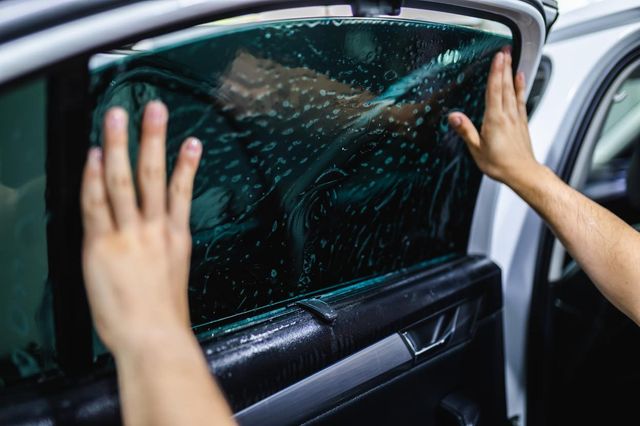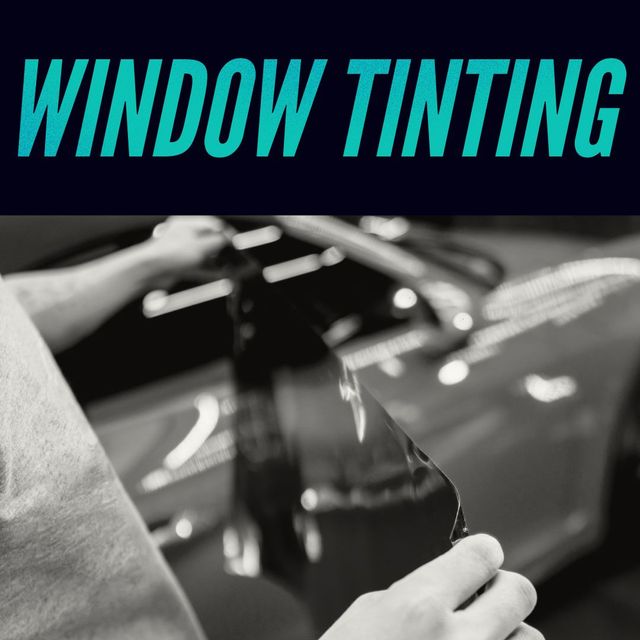Discover the Advantages of UV Defense with Auto Window Tinting
Discover the Advantages of UV Defense with Auto Window Tinting
Blog Article
Window Tinting Regulations and Standards: What You Need to Know Prior To Tinting Your Automobile
Prior to continuing with window tinting for your lorry, it is essential to familiarize on your own with the diverse laws and guidelines that control this practice across different states. These policies determine the allowable degrees of color darkness, usually measured by noticeable light transmission (VLT) percents, and consist of details specifications for front windshields intended at making certain roadway safety.
Summary of Home Window Tinting Regulations
Window tinting legislations are regularly subject to variation across various territories, showing neighborhood guidelines and safety considerations. These regulations dictate the acceptable degrees of tint darkness and reflectiveness on automobile home windows, making certain that vehicle drivers maintain appropriate exposure while additionally protecting versus hazardous UV rays and warm.
Many guidelines classify home window tinting based on the Visible Light Transmission (VLT) percentage, which suggests the amount of light that can pass through the window. Typically, lower VLT portions symbolize darker colors. Laws usually set apart between the front, side, and rear home windows, with more stringent constraints applied to the front windshield to improve safety and security for both the motorist and other road individuals.
Conformity with window tinting policies is essential, as offenses can result in penalties, mandatory removal of the color, and potential increases in insurance coverage premiums. It is essential for lorry owners to acquaint themselves with regional legislations before proceeding with window tinting installations.
State-by-State Color Rules
Understanding the particular window tinting regulations in each state is important for car owners looking for to abide by the law. Each state in the united state has established its very own set of policies controling home window tinting, which can vary considerably. These laws often determine the allowed degrees of color darkness, the kinds of home windows that can be tinted, and any medical exceptions that might apply.
As an example, states like The golden state have rigorous constraints on tint darkness for front windows, while others, such as New Mexico, may allow darker colors. Additionally, certain states mandate certain visibility portions for numerous windows, including the windshield, front side home windows, and rear windows. It is essential for car owners to familiarize themselves with their state's laws to stay clear of prospective fines or fines.
Additionally, some states might need a certification sticker to be put on tinted windows, suggesting conformity with state legislations. Failure to follow these laws not just risks legal repercussions however can additionally affect security and exposure while driving. Car proprietors ought to carry out thorough research or speak with regional authorities to ensure full understanding and conformity with state-by-state tint regulations.
Allowed Tint Types and degrees
Several lorry owners may be shocked to find out that enabled color levels and types vary widely throughout different states. Each state has actually established its own regulations pertaining to the permitted darkness and reflectivity of window tint, commonly determined by Visible Light Transmission (VLT) portions. VLT refers to the quantity of light that can pass with the tinted home windows; therefore, a reduced percentage suggests a darker tint.

Additionally, the sorts of tint products allowed can differ, with some states banning mirror-like or metallic surfaces. It is vital for lorry owners to acquaint themselves with their state's particular laws to ensure compliance. Non-compliance can result in fines, compulsory elimination of the color, or various other lawful effects, making it essential to recognize these policies before waging installment.
Medical Exemptions for Tinting
While not all states supply allowances for medical exceptions relating to window tinting, those that do identify the need for specific people to improve exposure and convenience due to medical conditions. Different medical conditions, such as lupus, skin cancer cells, and certain eye conditions, can render individuals specifically sensitive to sunshine. Subsequently, these individuals may call for darker tints to secure themselves from hazardous UV rays and glare.

It is essential to note that despite a medical exemption, there might still be limitations on the degree of color allowed. Compliance with state legislations ensures that individuals are both protected and within lawful limitations. Those thinking about clinical exemptions ought to call their neighborhood Division of Motor Autos or comparable authority to comprehend the treatments and requirements essential to request an exemption efficiently.
Penalties for Non-Compliance
Failing to follow window tinting regulations can lead to considerable charges, which vary by state. Regulation enforcement companies are equipped to provide citations for vehicles that do not abide by the specified tinting laws. These penalties generally include penalties, which can range from moderate quantities to several hundred dollars, depending upon the extent of the infraction and the state in inquiry.
In some jurisdictions, duplicated offenses might lead to escalating fines or added charges, such as obligatory court looks. Non-compliance might demand the removal of illegal tinting, typically at the owner's expense. In extreme situations, regular offenders may face suspension of their lorry enrollment until compliance is attained.
In addition, insurance policy ramifications might emerge from receiving numerous citations for home window color violations. Insurance providers may watch such offenses as an indication of riskier actions, possibly leading to enhanced premiums or problem in insurance coverage.
To stay clear of these penalties, it is important for automobile proprietors to acquaint themselves with their local home window tinting regulations and ensure that their lorry complies (Window Tinting). This aggressive method not just stays clear of lawful implications yet likewise advertises road safety and security
Conclusion

Many policies classify window tinting based on the Visible Light Transmission (VLT) portion, which indicates the amount of light that can pass via the window. Compliance with window tinting laws is crucial, as infractions can result in fines, mandatory removal of the color, and prospective boosts in insurance costs.Recognizing the particular window tinting guidelines in each state is important for automobile proprietors seeking to conform with the regulation. These policies commonly dictate the allowed degrees of color darkness, the types of windows that can be tinted, and any type of medical exemptions that may apply.
For instance, states like The golden state have stringent limitations on tint darkness for front home windows, while others, such as New Mexico, may enable darker colors.
Report this page